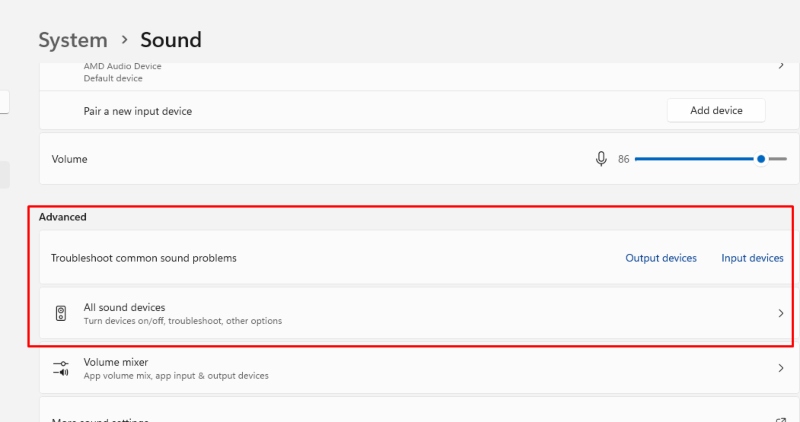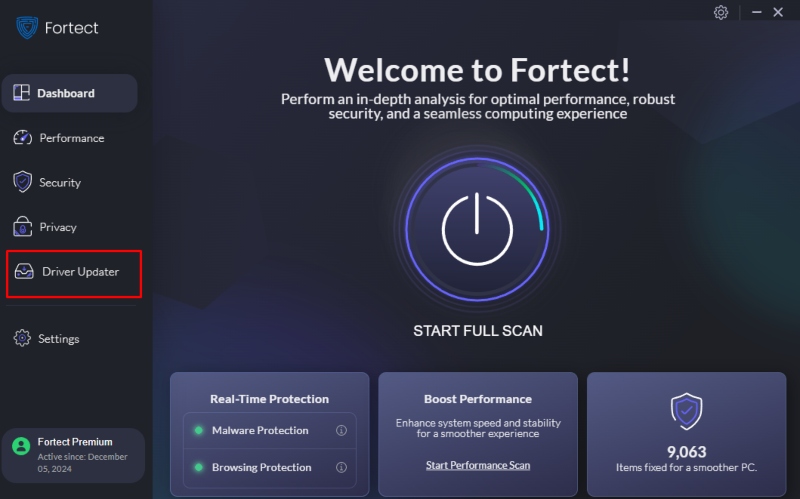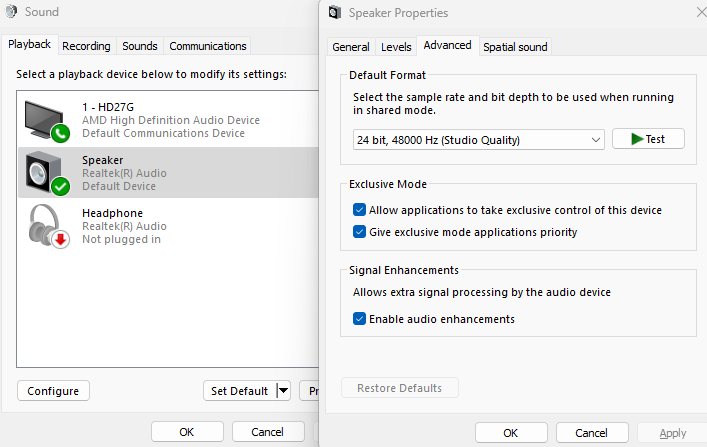SOLVED: Audio Problems After Windows 11 Cumulative Update
Audio problems after a Windows 11 cumulative update can occur for several reasons. Cumulative updates often contain new drivers, patches, or changes that can conflict with your existing audio drivers or system settings. These conflicts can cause your system to malfunction, resulting in no audio output or distorted Sound.
Possible reasons include:
- Outdated or incompatible drivers
- Audio driver corruption after the update
- Conflicts with third-party software or settings
- Windows settings being reset or changed during the update
How to Fix Audio Problems After a Windows 11 Cumulative Update
Now that we’ve identified the issue’s potential causes, let’s walk through some troubleshooting steps that may help resolve the audio problem. Follow these steps carefully to fix the issue.
1. Restart Your Computer
Restarting your computer after a Windows update can sometimes resolve audio problems. The System may require a restart to install updates and sync drivers properly.
- Click the Start menu and select Restart.
- Wait for the computer to reboot and check if the Audio works appropriately.
If the audio issue persists after restarting, move on to the next solution.
2. Run the Windows Audio Troubleshooter

Windows 11 includes a built-in audio troubleshooter that automatically detects and resolves common sound issues. This is a quick and easy way to identify and fix the problem.
- Press Win + I to open Settings.
- Go to System and select Sound.
- Under the Advanced section, click on Troubleshoot.
- Select Playing Audio and follow the on-screen instructions.
The troubleshooter will attempt to diagnose and fix any audio problems it detects.
3. Update Your Audio Drivers
After a cumulative update, outdated or incompatible drivers can lead to sound problems. Updating your audio drivers is essential to ensure your System is equipped with the latest version compatible with Windows 11.
- Press Win + X and select Device Manager.
- Expand the Sound, video, and game controllers section.
- Right-click on your audio device and choose Update Driver.
- Select Search automatically for drivers.
If a new driver is found, it will be installed automatically. After the update, restart your PC and check if the issue is resolved.

I commend you for choosing a third-party repair tool like Fortect, which includes a driver updater feature.
Fortect repairs corrupted files that could be causing audio issues and provides real-time protection. The built-in driver updater quickly scans your installed drivers, identifies any outdated or corrupted ones, and automatically updates them in minutes. Once the updates are complete, Fortect optimizes your System, effectively resolving audio problems after a Windows 11 cumulative update.
Download and install Fortect now.
4. Roll Back Your Audio Driver
If the latest driver update caused the issue, rolling back to a previous audio driver version can help fix the problem. This can be done through the Device Manager.
- Open Device Manager by pressing Win + X and selecting it.
- Right-click on your audio device under Sound, video, and game controllers and choose Properties.
- Go to the Driver tab and select Roll Back Driver if available.
This will return your audio driver to the previous version that worked fine before the update. After rolling back, restart your PC and test the Audio again.
5. Reinstall Your Audio Driver
If updating or rolling back the driver doesn’t work, you can try reinstalling the audio driver entirely. This will remove any corrupted driver files and reinstall a fresh version.
- Open Device Manager by pressing Win + X.
- Expand the Sound, video, and game controllers section.
- Right-click your audio device and select Uninstall device.
- Restart your computer. Windows will automatically reinstall the audio driver upon reboot.
Once the driver is reinstalled, check whether the Audio works correctly.
6. Check Sound Settings and Output Device
Sometimes, the issue may be as simple as selecting the wrong audio output device after an update. During an update, Windows 11 may reset sound settings or change the default playback device.
- Right-click the sound icon in the taskbar and select Open Sound settings.
- Under the Output section, ensure the correct device is selected.
- If necessary, choose your preferred audio device and test the Sound.
7. Disable Audio Enhancements

Audio enhancements can sometimes interfere with sound performance, especially after an update. Disabling them may resolve the issue.
- Right-click the sound icon and select Sounds.
- In the Playback tab, right-click your active audio device and choose Properties.
- Go to the Advanced tab and check the box to turn off all enhancements.
- Click Apply and then OK.
After turning off the enhancements, check if the Sound is working as expected.
Conclusion
Audio issues after a Windows 11 cumulative update are relatively common but can be quickly resolved using the above troubleshooting steps. Whether updating or rolling back drivers, running the audio troubleshooter, or adjusting sound settings, these solutions should help get your Audio back to normal. If none of these steps work, consider reinstalling Windows or contacting Microsoft support for further assistance.
If you found this guide helpful, don’t forget to check out our other troubleshooting tips for resolving Windows 11 issues!




